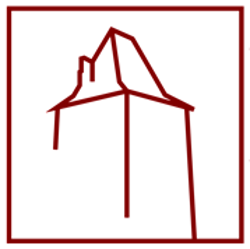The origin of the names
The oldest names of the settlements in the Koźle Region originate from the times when this territory was a part of the country of the first Piasts. Many names defining the rights, functions, or specialization of the citizens come from this time. Therefore, it is easy to guess what the inhabitants of the Rybarze village dealt with (ryba is a Polish word for fish). The majority of the inhabitants of Solarnia were employed to extract salt from brines via evaporation. Cauldrons were made in Kotlarnia, sheet metal – in Blachownia, whereas Kuźniczka or Stara Kuźnia housed forges. In Przewóz, there was a harbor where the ferrymen transporting the goods down the Odra river worked. Many names of towns originate from the words that have already gone or are going out of use, e.g., the name of Steblów allegedly originates from the word stebnowanie (topstitching) – that is, making first stitches during the sewing of clothing.
The next group of names of villages comes from medieval legislation, as they are related to the rights and functions that these towns were assigned. In each region of entire Poland, you can stumble upon a village called Ligota. This name is a palatalized version of the word “lgota,” which means tax exemption. Ligota is a village whose inhabitants were exempted from paying tax to the duke for some period, usually 10 or 20 years, since its settlement.
On the other hand, the names of villages containing an adjective derived from the name of a town, e.g., “Kozielskie” (derived from Koźle) most often came from the allocation of land outside of the town to the townsman buying a plot in a newly located town. Thus, the inhabitants of Koźle were given pastures in a place that, over time, was named Łąki Kozielskie (the Koźle Meadows) and arable lands, the so-called “łans,” where the Łany village was eventually settled.
There is a separate group of the names of villages that include a person’s name, most often one of the possessors, that is, the organizing authorities of a village. The names originating from the possessors’ names probably include: Urbanowice, Radoszowy, Milice, Ucieszków, Nieznaszyn, Pawłowiczki, and Naczęsławice. Nowadays, it is clear to us that Milice was settled by Milik, whereas Radoszowy – by Radost.
Since the 13th century, the colonists from Western Europe, among which Germans constituted the majority, began arriving in Silesia. Thus, over time, the settlements received German names as well. They were usually coined during the attempts of writing down the Slavic name in the German language, e.g., Dziergowice – Dziergowitz or Solarnia – Sollarnia. It was not until 1936 that the fascist authorities conducted a thorough process of Germanization of the names of settlements and the surnames. After World War II, the Polish names were established by the governmental commission.







